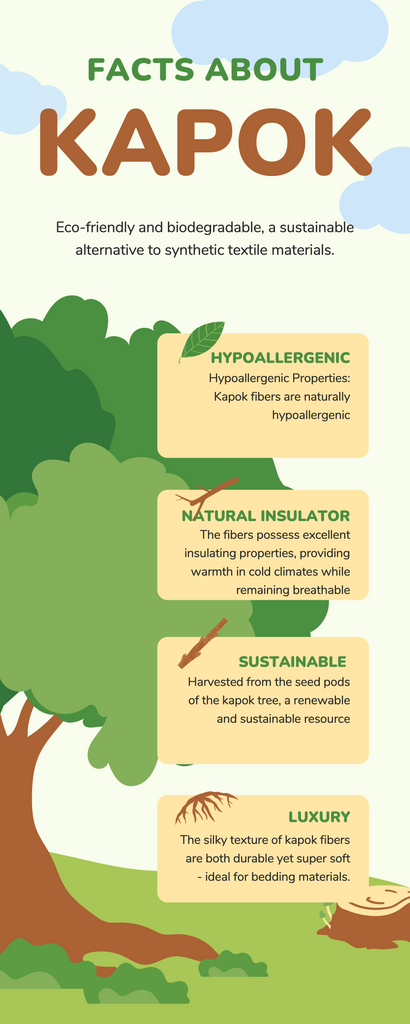The environmental importance of kapok trees: Guardians of biodiversity and sustainable resources
INTRODUCTION
In our relentless pursuit of sustainable living, it is imperative to recognise the central role that trees play in maintaining ecological balance. Among the many arboreal wonders, the kapok tree (Ceiba pentandra), often called the "silk cotton tree", emerges as a compelling subject. These colossal giants, typically found in the tropical rainforests of Central and South America, have a profound environmental impact that goes beyond their aesthetic grandeur. In this discourse, we will explore the environmental significance of kapok trees and their role in promoting biodiversity and sustainable resources.
The majestic presence of kapok trees
Kapok trees are celebrated for their towering stature, often reaching heights of up to 200 feet, characterised by their sturdy buttresses and expansive canopies. Their towering presence in the rainforest landscape not only provides a multitude of benefits to the natural environment, but also extends its benevolence to neighbouring communities.
Wildlife habitat: The extensive branches and lush foliage of kapok trees are instrumental in creating self-contained ecosystems. They provide a home for a variety of bird, insect and small mammal species, greatly enhancing the biodiversity of the rainforest.
Medicinal use: Indigenous communities living near kapok trees have long recognised its medicinal properties. Various components of the tree are used in traditional healing practices, providing essential health resources to these communities.
Sustainable resources: Kapok trees produce voluminous, buoyant fibres from their seeds. These fibres have been a source of livelihood for indigenous people for centuries and are renowned for their light weight. They are the preferred choice for making products such as life jackets, pillows and duvets, supporting local economies and promoting environmentally friendly industries.
Environmental impact of kapok trees
Carbon sequestration: Kapok trees have a remarkable ability to absorb and store carbon dioxide from the atmosphere. Their expansive canopy and dense wood make them indispensable contributors to forest ecosystems, thereby enhancing global efforts to combat climate change.
Biodiversity hotspots: Often found in tropical rainforests, kapok trees act as lynchpins in biodiversity-rich regions. They support a wide range of species and contribute significantly to the overall resilience and balance of these ecosystems.
Rainforest conservation: The conservation of kapok trees indirectly supports the conservation of entire rainforest ecosystems. These ecosystems play a key role in regulating global climate patterns and provide a vital refuge for many endangered species.
Soil stabilisation: Kapok trees, with their extensive root systems, play an indispensable role in preventing soil erosion, a common problem in tropical rainforest areas characterised by frequent heavy rainfall. The soil stability provided by these trees is crucial to maintaining the integrity of the ecosystem.
Challenges and conservation efforts
Kapok trees, like many rainforest species, face significant challenges from deforestation, habitat degradation and illegal logging. A number of conservation initiatives are underway to protect these remarkable trees and their environmental contribution, including
Forest protection: The establishment and maintenance of protected areas and reserves serve as bulwarks for kapok tree habitats and the diverse life forms that inhabit them.
Sustainable resource extraction: Initiatives are underway to promote the sustainable extraction of kapok fibre, ensuring the survival of the trees while continuing to support local economies and sustainable industries.
Community engagement: Involving local communities in conservation initiatives not only safeguards kapok trees, but also improves the well-being of the people who live in rainforest regions.
Conclusion
Kapok trees are emerging as environmental sentinels in our quest for a sustainable future. These arboreal giants provide habitat, nurture biodiversity, sequester carbon and offer sustainable resources. Our commitment to preserving these majestic creatures goes beyond preserving their heritage; it serves as a pledge to sustain entire ecosystems and strengthen the global environment. The kapok tree deserves our reverence as an essential custodian of biodiversity and sustainable resources in the rainforests of Central and South America.








